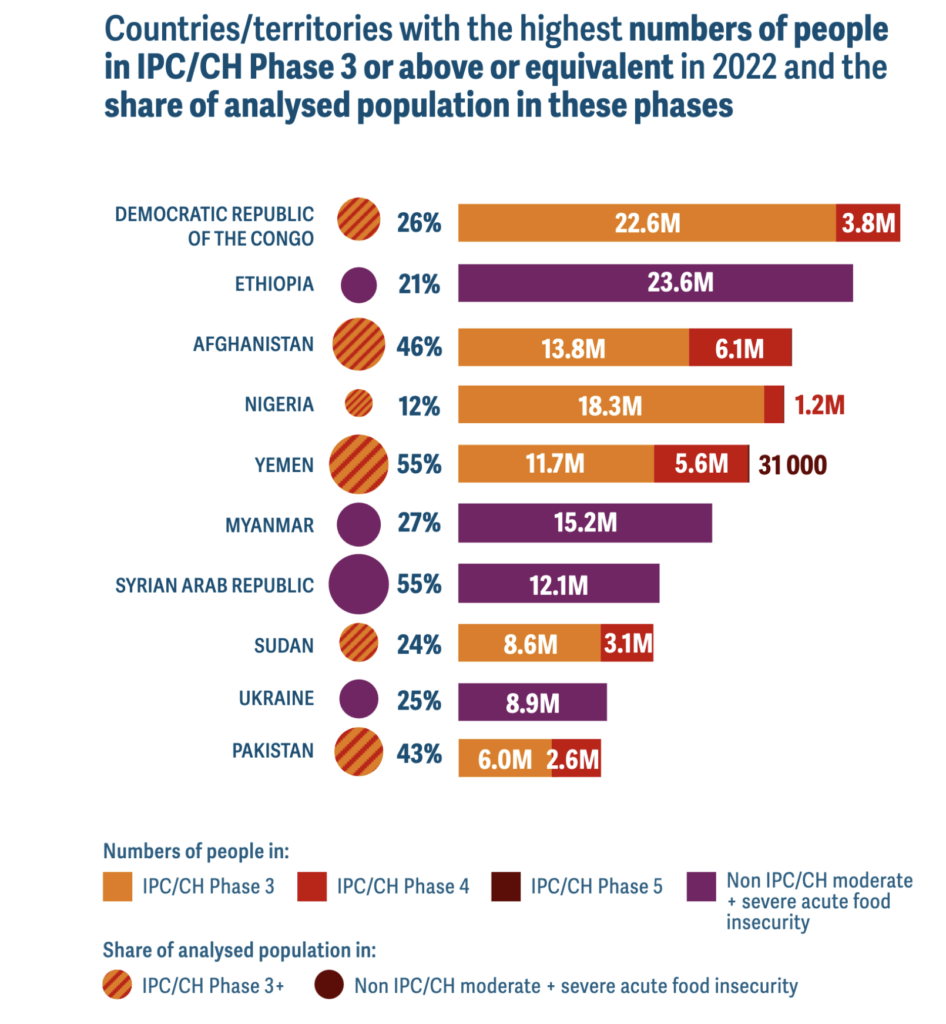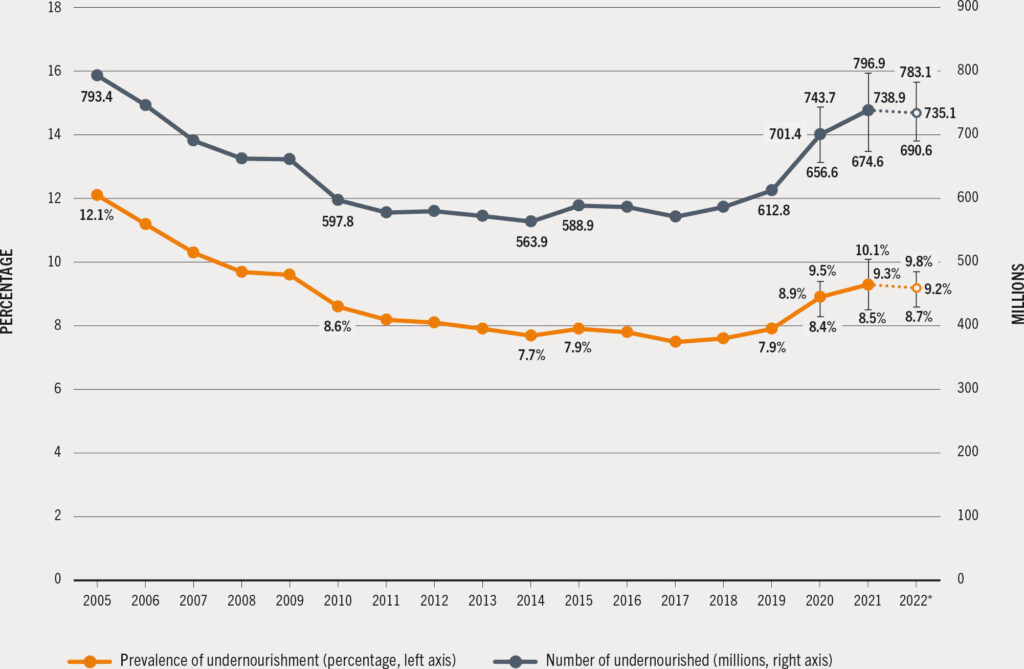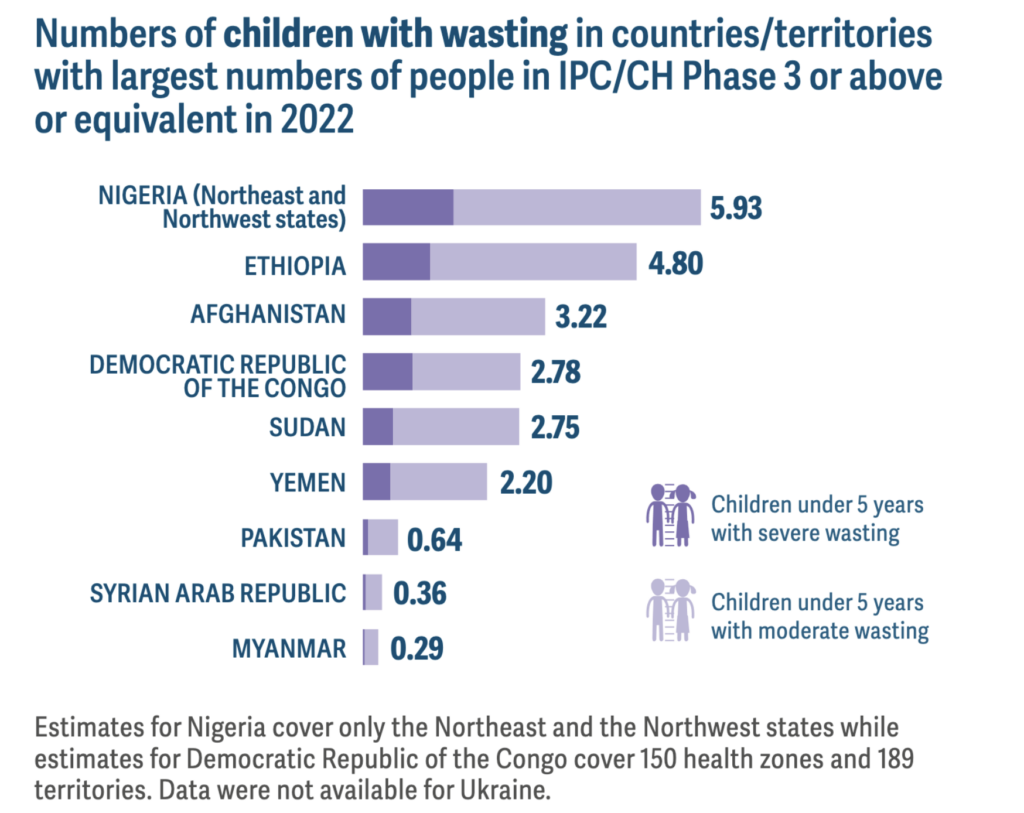The data presented here is taken from FAO’s Food Security and Nutrition report 2023 and The 2023 Global Report on Food Crises (GRFC) as these are the key resources that provide global assessments of food security. The GRFC and this report are both multi-partnership efforts that provide international assessments of food security; however, their objectives and geographical scope are distinct, and they rely on different data and methodologies. On the one hand, this report has the broad objective of monitoring chronic food insecurity in the entire world, on a regular basis, by reporting on SDG Indicators 2.1.1 and 2.1.2. Chronic food insecurity is defined as a structural, long-term situation of food deprivation.
Current status
Disruptions in the food system as a result of the COVID-19 pandemic, conflicts (like Russia-Ukraine conflict and Gaza conflicts), weather shocks (like El Nino effects in Southeast Asia and droughts), and domestic policies (like India’s export restrictions on rice) have led to an increase in the number of people facing hunger since 2019. GRFC 2023 estimates that over a quarter of a billion people were acutely food-insecure and required urgent food assistance in 58 food-crisis countries/territories in 2022 (Figure below). This is the highest number in the seven-year history of the GRFC. More than 40 percent of the population in IPC/CH Phase 3 (Crisis phase) or above or equivalent in the GRFC 2023 resided in just five countries/ territories – the Democratic Republic of the Congo, Ethiopia, Afghanistan, Nigeria (21 states and the Federal Capital Territory (FCT)) and Yemen. The primary drivers of acute food insecurity in food-crisis countries are conflicts, economic shocks, weather extremes and forced displacement.

Hunger
According to the State of Food Security and Nutrition in the World report, between 691 and 783 million people faced hunger in 2022, representing an increase of 122 million people compared to 2019 (before pandemic). Global hunger, measured by the prevalence of undernourishment (PoU) (SDG Indicator 2.1.1), remained relatively unchanged from 2021 to 2022 but is still far above pre-COVID-19-pandemic levels, affecting around 9.2 percent of the world population in 2022 compared with 7.9 percent in 2019. The updates on the country-wise status of food security are available on Global Food and Nutrition Security Dashboard.

Source: FAO, 2023. FAOSTAT: Suite of Food Security Indicators
Sub-optimal diets are now responsible for 20% of premature (disease-mediated) mortality worldwide, as well as for 20% of all disability-adjusted life years (DALYs). The outcome is rapidly escalating pressure on healthcare systems which are facing an epidemic of diet-related diseases – including stroke, cardiovascular disease, and diabetes. Affected individuals and families are at risk of becoming drawn into intergenerational cycles of poverty and inequality.
Nutrition
Most countries are not on track to meet the nutrition targets set for 2025 by the World Health Assembly. The regions with high levels of acute food security, the number of child wasting tends to be high. In 30 of the 42 major food crises analysed in the GRFC 2023 where data on malnutrition were available, over 35 million children under 5 years of age suffered from wasting, with 9.2 million of them severely wasted (the most lethal form of undernutrition and a major contributor to child mortality). Out of the total estimated children with wasting in those countries, about 65 percent lived in nine out of the ten countries with the highest number of people in IPC/CH Phase 3 or above or equivalent.

Source: Global Report on Food Crisis 2023
The global food crisis has worsened the undernutrition situation of adolescent girls and women whose livelihoods, income and access to nutritious food have been disproportionately affected by conflict, climate change, poverty and other economic shocks, including that of the COVID-19 pandemic from early 2020.
Regional variability
The prevalence of moderate or severe food insecurity rose slightly in Africa and in Northern America and Europe and decreased non-significantly in Asia from 2021 to 2022. The only region showing encouraging progress is Latin America and the Caribbean, where moderate or severe food insecurity decreased from 40.3 percent in 2021 to 37.5 percent in 2022, the equivalent of 16.5 million fewer people in one year, mainly in South America. A comparison of food insecurity among rural, peri-urban and urban populations reveals that global food insecurity, at both levels of severity, is lower in urban areas. Moderate or severe food insecurity affected 33.3 percent of adults living in rural areas in 2022 compared with 28.8 percent in peri-urban areas and 26.0 percent in urban areas (FAO 2023).
Projection
It is projected that almost 600 million people will be chronically undernourished in 2030, pointing to the immense challenge of achieving the SDG target to eradicate hunger. This is about 119 million more than in a scenario in which neither the pandemic nor the war in Ukraine had occurred, and around 23 million more than if the war in Ukraine had not happened. Most progress is expected to occur in Asia, whereas no progress is foreseen in Latin America and the Caribbean, and hunger is projected to increase significantly in Africa by 2030 (FAO, 2023).